| Dolphins Fossil range: Early Miocene - Recent | ||||||||||||
|---|---|---|---|---|---|---|---|---|---|---|---|---|
 Bottlenose Dolphin breaching in the bow wave of a boat | ||||||||||||
| Scientific classification | ||||||||||||
| ||||||||||||
| Genera | ||||||||||||
| See article below. |
Dolphins are marine mammals that are closely related to whales and porpoises. There are almost forty species of dolphin in seventeen genera. They vary in size from 1.2 metres (4 ft) and 40 kilograms (88 lb) (Maui's Dolphin), up to 9.5 m (30 ft) and ten tonnes (the Orca or Killer Whale). They are found worldwide, mostly in the shallower seas of the continental shelves, and are carnivores, mostly eating fish and squid. The family Delphinidae is the largest in the Cetacea, and relatively recent: dolphins evolved about ten million years ago, during the Miocene. Dolphins are considered to be amongst the most intelligent of animals and their often friendly appearance and seemingly playful attitude have made them popular in human culture.
Contents[hide] |
Origin of the name
The name is originally from Ancient Greek δελφίς (delphís; "dolphin"), which was related to the Greek δελφύς (delphys; "womb"). The animal's name can therefore be interpreted as meaning "a 'fish' with a womb".[1] The name was transmitted via the Latin delphinus, Middle Latin dolfinus and the Old French daulphin, which reintroduced the ph into the word.
The word is used in a few different ways. It can mean:
- Any member of the family Delphinidae (oceanic dolphins),
- Any member of the families Delphinidae and Platanistoidea (oceanic and river dolphins),
- Any member of the suborder Odontoceti (toothed whales; these include the above families and some others),
- Used casually as a synonym for Bottlenose Dolphin, the most common and familiar species of dolphin.
In this article, the second definition is used. Porpoises (suborder Odontoceti, family Phocoenidae) are thus not dolphins in this sense. Orcas and some closely related species belong to the Delphinidae family and therefore qualify as dolphins, even though they are called whales in common language. A group of dolphins can be called a "school" or a "pod". Male dolphins are called "bulls", females "cows" and young dolphins are called "calves".[2]
Taxonomy
- Suborder Odontoceti, toothed whales
- Family Delphinidae, oceanic dolphins
- Genus Delphinus
- Long-Beaked Common Dolphin, Delphinus capensis
- Short-Beaked Common Dolphin, Delphinus delphis
- Genus Tursiops
- Bottlenose Dolphin, Tursiops truncatus
- Indo-Pacific Bottlenose Dolphin, Tursiops aduncus
- Genus Lissodelphis
- Northern Rightwhale Dolphin, Lissodelphis borealis
- Southern Rightwhale Dolphin, Lissiodelphis peronii
- Genus Sotalia
- Tucuxi, Sotalia fluviatilis
- Genus Sousa
- Indo-Pacific Hump-backed Dolphin, Sousa chinensis
- Chinese White Dolphin (the Chinese variant), Sousa chinensis chinensis
- Atlantic Humpbacked Dolphin, Sousa teuszii
- Indo-Pacific Hump-backed Dolphin, Sousa chinensis
- Genus Stenella
- Atlantic Spotted Dolphin, Stenella frontalis
- Clymene Dolphin, Stenella clymene
- Pantropical Spotted Dolphin, Stenella attenuata
- Spinner Dolphin, Stenella longirostris
- Striped Dolphin, Stenella coeruleoalba
- Genus Steno
- Rough-Toothed Dolphin, Steno bredanensis
- Genus Cephalorynchus
- Chilean Dolphin, Cephalorhynchus eutropia
- Commerson's Dolphin, Cephalorhynchus commersonii
- Heaviside's Dolphin, Cephalorhynchus heavisidii
- Hector's Dolphin, Cephalorhynchus hectori
- Genus Grampus
- Risso's Dolphin, Grampus griseus
- Genus Lagenodelphis
- Fraser's Dolphin, Lagenodelphis hosei
- Genus Lagenorhyncus
- Atlantic White-Sided Dolphin, Lagenorhynchus acutus
- Dusky Dolphin, Lagenorhynchus obscurus
- Hourglass Dolphin, Lagenorhynchus cruciger
- Pacific White-Sided Dolphin, Lagenorhynchus obliquidens
- Peale's Dolphin, Lagenorhynchus australis
- White-Beaked Dolphin, Lagenorhynchus albirostris
- Genus Orcaella
- Australian Snubfin Dolphin, Orcaella heinsohni
- Irrawaddy Dolphin, Orcaella brevirostris
- Genus Peponocephala
- Melon-headed Whale, Peponocephala electra
- Genus Orcinus
- Killer Whale (Orca), Orcinus orca
- Genus Feresa
- Pygmy Killer Whale, Feresa attenuata
- Genus Pseudorca
- False Killer Whale, Pseudorca crassidens
- Genus Globicephala
- Long-finned Pilot Whale, Globicephala melas
- Short-finned Pilot Whale, Globicephala macrorhynchus
- Genus Delphinus
- Family Platanistoidea, river dolphins
- Genus Inia
- Boto (Amazon River Dolphin), Inia geoffrensis
- Genus Lipotes
- Chinese River Dolphin (Baiji), Lipotes vexillifer (considered functionally extinct)
- Genus Platanista
- Ganges River Dolphin, Platanista gangetica
- Indus River Dolphin, Platanista minor
- Genus Pontoporia
- La Plata Dolphin (Franciscana), Pontoporia blainvillei
- Genus Inia
- Family Delphinidae, oceanic dolphins
Six species in the family Delphinidae are commonly called "whales" but are strictly speaking dolphins. They are sometimes called "blackfish".
- Melon-headed Whale, Peponocephala electra
- Killer Whale (Orca), Orcinus orca
- Pygmy Killer Whale, Feresa attenuata
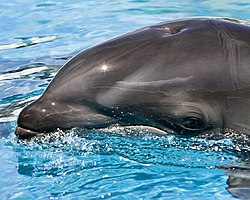 Wolphin Kawili'Kai at the Sea Life Park in Hawaii.
Wolphin Kawili'Kai at the Sea Life Park in Hawaii. - False Killer Whale, Psudorca crassidens
- Long-finned Pilot Whale, Globicephala melas
- Short-finned Pilot Whale, Globicephala macrorhynchus
Hybrid dolphins
In 1933, three abnormal dolphins were beached off the Irish coast; these appeared to be hybrids between Risso's Dolphin and the Bottlenose Dolphin.[3] This mating has since been repeated in captivity and a hybrid calf was born. In captivity, a Bottlenose Dolphin and a Rough-toothed Dolphin produced hybrid offspring.[4] A Common-Bottlenose hybrid lives at SeaWorld California [5] Various other dolphin hybrids live in captivity around the world or have been reported the wild, such as a Bottlenose-Atlantic Spotted hybrid.[6] The best known hybrid however is the Wolphin, a False Killer Whale-Bottlenose Dolphin hybrid. The Wolphin is a fertile hybrid, and two such Wolphins currently live at the Sea Life Park in Hawaii, the first having been born in 1985 from a male False Killer Whale and a female Bottlenose. Wolphins have also been observed in the wild.[7]
Evolution and anatomy
Evolution
- See also: Evolution of cetaceans
Dolphins, along with whales and porpoises, are descendants of terrestrial mammals, most likely of the Artiodactyl order. The ancestors of the modern day dolphins entered the water roughly fifty million years ago, in the Eocene epoch.
Modern dolphin skeletons have two small, rod-shaped pelvic bones thought to be vestigial hind legs. In October 2006 an unusual Bottlenose Dolphin was captured in Japan; it had small fins on each side of its genital slit which scientists believe to be a more pronounced development of these vestigial hind legs.[8]
Anatomy
Dolphins have a streamlined fusiform body, adapted for fast swimming. The tail fin, called the fluke, is used for propulsion, while the pectoral fins together with the entire tail section provide directional control. The dorsal fin, in those species that have one, provides stability while swimming.
Though it varies per species, basic colouration patterns are shades of grey usually with a lighter underside. It is often combined with lines and patches of different hue and contrast.
The head contains the melon, a round organ used for echolocation. In many species, the jaws are elongated, forming a distinct beak; for some species like the Bottlenose, there is a curved mouth which looks like a fixed smile. Teeth can be very numerous (up to two hundred and fifty) in several species. Dolphins breathe through a blowhole located on top of their head, with the trachea being anterior to the brain. The dolphin brain is large and highly complex and is different in structure from most land mammals.
Unlike most mammals, dolphins do not have hair, but they are born with a few hairs around the tip of their rostrum which they lose shortly after birth, in some cases even before they are born.[9] The only exception to this is the Boto river dolphin, which does have some small hairs on the rostrum.[10]
Their reproductive organs are located on the underside of the body. Males have two slits, one concealing the penis and one further behind for the anus. The female has one genital slit, housing the vagina and the anus. A mammary slit is positioned on either side of the female's genital slit.
Senses
Most dolphins have acute eyesight, both in and out of the water, and their sense of hearing is superior to that of humans. Though they have a small ear opening on each side of their head, it is believed that hearing underwater is also if not exclusively done with the lower jaw which conducts the sound vibrations to the middle ear via a fat-filled cavity in the lower jaw bone. Hearing is also used for echolocation, which seems to be an ability all dolphins have. It is believed that their teeth are arranged in a way that works as an array or antenna to receive the incoming sound and make it easier for them to pinpoint the exact location of an object.[11] The dolphin's sense of touch is also well-developed, with free nerve endings being densely packed in the skin, especially around the snout, pectoral fins and genital area. However, dolphins lack an olfactory nerve and lobes and thus are believed to have no sense of smell,[12] but they can taste and do show preferences for certain kinds of fish. Since dolphins spend most of their time below the surface normally, just tasting the water could act in a manner analogous to a sense of smell.
Though most dolphins do not have any hair, they do still have hair follicles and it is believed these might still perform some sensory function, though it is unclear what exactly this may be.[13] The small hairs on the rostrum of the Boto river dolphin are believed to function as a tactile sense however, possibly to compensate for the Boto's poor eyesight.[14]
Behaviour
- See also: Whale surfacing behaviour

Dolphins are often regarded as one of Earth's most intelligent animals, though it is hard to say just how intelligent dolphins are, as comparisons of species' relative intelligence are complicated by differences in sensory apparatus, response modes, and nature of cognition. Furthermore, the difficulty and expense of doing experimental work with large aquatics means that some tests which could yield meaningful results still have not been carried out, or have been carried out with inadequate sample size and methodology. Dolphin behaviour has been studied extensively by humans however, both in captivity and in the wild. See the cetacean intelligence article for more details.
Social behaviour
Dolphins are social, living in pods (also called "schools") of up to a dozen individuals. In places with a high abundance of food, pods can join temporarily, forming an aggregation called a superpod; such groupings may exceed a thousand dolphins. The individuals communicate using a variety of clicks, whistles and other vocalizations. They also use ultrasonic sounds for echolocation. Membership in pods is not rigid; interchange is common. However, the cetaceans can establish strong bonds between each other. This leads to them staying with injured or ill individuals, even actively helping them to breathe by bringing them to the surface if needed.[15] This altruistic behaviour does not appear to be limited to their own species however. A dolphin in New Zealand that goes by the name of Moko has been observed to seemingly help guide a female Pygmy Sperm Whale together with her calf out of shallow water where they had stranded several times.[16] They have also been known to seemingly protect swimmers from sharks by swimming circles around the swimmers[17][18] or charging the sharks to make them go away.[citation needed]
Dolphins also show cultural behaviour, something long believed to be a quality unique to humans. In May 2005, a discovery was made in Australia which shows this cultural aspect of dolphin behaviour: Some dolphins, such as the Indo-Pacific Bottlenose Dolphin (Tursiops aduncus) teach their young to use tools. The dolphins break sponges off and cover their snouts with them thus protecting their snouts while foraging. This knowledge of how to use a tool is mostly transferred from mothers to daughters, unlike simian primates, where the knowledge is generally passed on to both sexes. The technology to use sponges as mouth protection is not genetically inherited but a taught behaviour.[19] Another such behaviour was discovered amongst river dolphins in Brazil, where some male dolphins apparently use objects such as weeds and sticks as part of a sexual display.[20]
Dolphins are known to engage in acts of aggression towards each other. The older a male dolphin is, the more likely his body is covered with scars ranging in depth from teeth marks made by other dolphins. It is suggested that male dolphins engage in such acts of aggression for the same reasons as humans: disputes between companions or even competition for other females. Acts of aggression can become so intense that targeted dolphins are known to go into exile, leaving their communities as a result of losing a fight with other dolphins.
Male Bottlenose Dolphins have been known to engage in infanticide. Dolphins have also been known to kill porpoises for reasons which are not fully understood, as porpoises generally do not share the same fish diet as dolphins and are therefore not competitors for food supplies.[21]
Reproduction and sexuality
Dolphin copulation happens belly to belly and though many species engage in lengthy foreplay, the actual act is usually only brief, but may be repeated several times within a short timespan. The gestation period varies per species; for the small Tucuxi dolphin, this period is around 11 to 12 months, while for the Orca the gestation period is around 17 months. They usually become sexually active at a young age, even before reaching sexual maturity. The age at which sexual maturity is reached varies per species and gender.
Dolphins are known to have sex for reasons other than reproduction, sometimes also engaging in acts of a homosexual nature.[22] Various dolphin species have been known to engage in sexual behaviour with other dolphin species,[22] this also having resulted in various hybrid dolphin species as mentioned earlier. Sexual encounters may be violent, with male dolphins sometimes showing aggressive behaviour towards both females and other male dolphins.[22][23] Occasionally, dolphins will also show sexual behaviour towards other animals, including humans.[24]
Feeding
Various methods of feeding exist, not just between species but also within a species. Various methods may be employed, some techniques being used by only a single dolphin population. Fish and squid are the main source of food for most dolphin species, but the False Killer Whale and the Killer Whale also feed on other marine mammals.
One feeding method employed by many species is herding, where a pod will control a school of fish while individual members take turns plowing through the school, feeding. The tightly packed school of fish is commonly known as a bait ball. Coralling is a method where fish are chased to shallow water where they are more easily captured. In South Carolina, the Atlantic Bottlenose Dolphin takes this one step further with what has become known as strand feeding, where the fish are driven onto mud banks and retrieved from there.[25] In some places, Orcas will also come up to the beach to capture sea lions. Some species also whack fish with their fluke, stunning them and sometimes sending fish clear out of the water.
Reports of cooperative human-dolphin fisheries date back to the ancient Roman author and natural philosopher Pliny the Elder.[26] A modern human-dolphin fishery still takes place in Laguna, Santa Catarina, Brazil. Here, dolphins drive fish towards fishermen waiting along the shore and give them a signal when they can cast their nets. The dolphins then feed off the fish that manage to escape the nets.[27][28]
Vocalizations
Dolphins are capable of making a broad range of sounds using nasal airsacs located just below the blowhole. Roughly three categories of sounds can be identified however; frequency modulated sounds which are usually just called whistles; burst-pulsed sounds and clicks. Whistles are used by dolphins to communicate, though the nature and extent of their ability to communicate in this way is not known. Research has shown however that at least some dolphin species are capable of sending identity information to each other using a signature whistle; a whistle that refers specifically to the identity of a certain dolphin. The burst-pulsed sounds are also used for communication, but again the nature and extent of communication possible this way is not known.[29] The clicks are directional and used by dolphins for echolocation and are often in a short series called a click train, the rate increasing when approaching an object of interest. Dolphin echolocation clicks are amongst the loudest sounds made by animals in the sea.[30]
Jumping and playing
Dolphins occasionally leap above the water surface, sometimes performing acrobatic figures (e.g. the Spinner Dolphin). Scientists are not always quite certain about the purpose of this behaviour and the reason for it may vary; it could be to locate schools of fish by looking at above-water signs like feeding birds, they could be communicating to other dolphins to join a hunt, attempting to dislodge parasites, or simply doing it for fun.
Play is a fairly important part of dolphins' lives, and they can be observed playing with seaweed or play-fighting with other dolphins. At times they also harass other local creatures, like seabirds and turtles. Dolphins also seem to enjoy riding waves and frequently 'surf' coastal swells and the bow waves of boats. Occasionally, they're also willing to playfully interact with human swimmers.
Sleeping
Because dolphins need to come up to the surface to breathe and have to be alert for possible predators, they do not sleep in the same way land mammals do. Generally, dolphins sleep with only one brain hemisphere in slow-wave sleep at a time, thus maintaining some amount of consciousness required to breathe and keeping one eye open to keep a watch out for possible threats. The earlier stages of sleep can be observed in both hemispheres of the brain, however.[31][32][33]
However, in captivity, dolphins have been observed to seemingly enter a fully asleep state where both eyes are closed and the animal does not respond to mild external stimuli, respiration being automatic with a tail kick reflex keeping the blowhole above the water. If not needed to keep the blowhole above the water, the tail kick reflex may subside. Dolphins kept unconscious using anesthetics initially show a similar tail kick reflex.[34] Though a similar state has been observed with wild Sperm Whales, it is not known if this state is ever reached in the wild amongst any dolphin species.[35]
Threats to dolphins
Natural threats to dolphins
Except for humans (discussed below), dolphins have few natural enemies, some species or specific populations having none at all making them apex predators. For most smaller species of dolphins, only a few larger species of shark such as the bull shark, dusky shark, tiger shark and great white shark are a potential risk, especially for calves. Some of the larger dolphin species such as Orcas may also prey on some of the smaller dolphin species, but this seems rare. Dolphins may also suffer from a wide variety of diseases and parasites.
Human threats to dolphins
- See also: Dolphin drive hunting
Some dolphin species face an uncertain future, especially some of the river dolphin species such as the Amazon River Dolphin, and the Ganges and Yangtze River Dolphin, all of which are critically or seriously endangered. A 2006 survey found no individuals of the Yangtze River Dolphin, leading to the conclusion that the species is now functionally extinct.[36]
Contamination of environment - the oceans, seas, and rivers - is an issue of concern, especially pesticides, heavy metals, plastics, and other industrial and agricultural pollutants which do not disintegrate rapidly in the environment are reducing dolphin populations, and resulting in dolphins building up unusually high levels of contaminants. Injuries or deaths due to collisions with boats, especially their propellers, are also common.
Various fishing methods, most notably purse seine fishing for tuna and the use of drift and gill nets, results in a large amounts of dolphins being killed inadvertently.[37] Accidental by-catch in gillnets and incidental captures in antipredator nets used in marine fish farms are common and poses a risk for mainly local dolphin populations.[38][39] Dolphin safe labels have been introduced to reassure consumers that the fish sold has been caught in a dolphin friendly way. In some parts of the world such as Taiji in Japan and the Faroe Islands, dolphins are traditionally considered as food, and killed in harpoon or drive hunts.
Human–dolphin relationships
Mythology
- See also: Dolphins in mythology
Dolphins have long played a role in human culture. Dolphins are common in Greek mythology and there are many coins from the time which feature a man or boy riding on the back of a dolphin. The Ancient Greeks treated them with welcome; a ship spotting dolphins riding in their wake was considered a good omen for a smooth voyage. In Hindu mythology, the Ganges River Dolphin is associated with Ganga, the deity of the Ganges river.
Entertainment
- See also: Dolphinarium
In more recent times, the 1963 Flipper movie and the subsequent popular Flipper television series, contributed to the popularity of dolphins in Western society. The series, created by Ivan Tors, portrayed a dolphin in a friendly relationship with two boys, Sandy and Bud; a kind of seagoing Lassie. Flipper, a Bottlenose Dolphin, understood English commands unusually well and was a marked hero. A second Flipper movie was made in 1996, which was based on the story of the original movie. A Bottlenose Dolphin also played a prominent role in the 1990s science fiction television series seaQuest DSV in which the animal, named Darwin, could communicate with English speakers using a vocoder, a fictional invention which translated the clicks and whistles to English and back.

More well known from this time period is probably the movie Free Willy however, which made famous the Orca playing Willy, Keiko. The 1977 horror movie Orca paints a less friendly picture of the animal. Here, a male Orca takes revenge on fishermen after the killing of his mate. In the 1973 movie The Day of the Dolphin trained dolphins are kidnapped and made to perform a naval military assassination using explosives.
The renewed popularity of dolphins in the 1960s resulted in the appearance of many dolphinariums around the world, which have made dolphins accessible to the public. Though criticism and more strict animal welfare laws have forced many dolphinariums to close their doors, hundreds still exist around the world attracting a large amount of visitors. In the United States, best known are the SeaWorld marine mammal parks, and their common Orca stage name Shamu, which they have trademarked, has become well known. Southwest Airlines, an American airline, has painted three of their Boeing 737 aircraft in Shamu colours as an advertisement for the parks and have been flying with such a livery on various aircraft since 1988.
Ecco the Dolphin is a well known video game series. The games are named after their main character, Ecco, a young Bottlenose Dolphin. The Ecco the Dolphin games hinge on the idea that cetaceans are sapient beings and have their own underwater society. The science fiction roleplaying game Blue Planet includes genetically "uplifted" dolphins as playable characters.
Welfare
A number of organizations rescue and rehabilitate sick, wounded, stranded or orphaned dolphins, such as the Mote Marine Laboratory, or work on dolphin conservation and welfare, such as the Whale and Dolphin Conservation Society.
Therapy
Dolphins are an increasingly popular choice of animal-assisted therapy for psychological problems and developmental disabilities. For example, a 2005 study with 30 participants found it was an effective treatment for mild to moderate depression.[40] However, this study was criticized on several grounds; for example, it is not known whether dolphins are more effective than common pets.[41] Reviews of this and other published dolphin-assisted therapy (DAT) studies have found important methodological flaws and have concluded that there is no compelling scientific evidence that DAT is a legitimate therapy or that it affords any more than fleeting improvements in mood.[42]
Military
- See also: Military dolphin
A number of militaries have employed dolphins for various purposes from finding mines to rescuing lost or trapped humans. Such military dolphins, however, drew scrutiny during the Vietnam War when rumors circulated that dolphins were being trained by the United States Navy to kill Vietnamese divers.[43] Dolphins are still being trained by the United States Navy however as part of the U.S. Navy Marine Mammal Program. The Russian military is believed to have closed its marine mammal program in the early 1990s. In 2000 the press reported that dolphins trained to kill by the Soviet Navy had been sold to Iran.[44]
Literature
Dolphins are also common in contemporary literature, especially science fiction novels. A military role for dolphins is found in William Gibson's short story Johnny Mnemonic, in which cyborg dolphins are used in war-time by the military to find submarines and, after the war, by a group of revolutionaries to decode encrypted information. Dolphins play a role as sentient patrollers of the sea enhanced with a deeper empathy toward humans in Anne McCaffrey's The Dragonriders of Pern series. In the Known Space universe of author Larry Niven, dolphins also play a significant role as fully-recognised "legal entities". More humorous is The Hitchhiker's Guide to the Galaxy, in which dolphins are the second most intelligent creatures on Earth (after mice, and followed by humans) and tried in vain to warn humans of the impending destruction of the planet. However, their behaviour was misinterpreted as playful acrobatics. Their story is told in So Long, and Thanks for All the Fish. Much more serious is their major role (along with chimpanzees) in David Brin's Uplift series. A talking Dolphin called "Howard" helps Hagbard Celine and his submarine crew fight the evil Illuminati in Robert Shea and Robert Anton Wilson's Illuminatus Trilogy.
Dolphins also appear frequently in non-science fiction literature however. In the book The Music of Dolphins by author Karen Hesse, a girl is raised by dolphins from the age of four until she is discovered by the coast guard. Fantasy author Ken Grimwood wrote dolphins into his 1995 novel Into the Deep about a marine biologist struggling to crack the code of dolphin intelligence, including entire chapters written from the viewpoint of his dolphin characters. In this book, humans and dolphins are capable of communicating via telepathy.
Art
Dolphins are a popular artistic motif, dating back ancient times. Examples include the Triton Fountain by Bernini and depictions of dolphins in the ruined Minoan palace at Knossos and on Minoan pottery.
 Pictures Of Dolphins Pictures of Dolphins, Pacific White Sided Dolphins of Northern Vancouver Island in British Columbia, Canada |  Pictures On Dolphin Pictures on Dolphin otherwise known as Lagenorhynchus obliquidens, their scientific name |  Dolphin Photos | |||||||||||||||||||||||||||||
 Sea Creatures Pacific White Sided Dolphins are beautiful sea creatures and fun to watch. |  Dolphin Photos Stock of Dolphin Photos, Pacific White Sided Dolphins |  Dolphins Underwater Underwater picture of pacific white sided dolphins | |||||||||||||||||||||||||||||
 Dolphin Images Two playing Dolphins photographed on a dolphin watching tour in British Columbia |  Dolphin Photo A pacific white sided dolphin riding the bow wave of a whale watching boat off the coast off northern Vancouver Island. |  CRW 0315 | |||||||||||||||||||||||||||||
 Bottlenose Dolphin Profile Valencia Spain Aquarium At the aquarium at the City of Arts and Science in Valencia, Spain, a Bottlenose Dolphin surfaces and shows visitors his side profile. |  Ocean Animals Pacific White Sided dolphins are Ocean Animals found around Northern Vancouver Island in British Columiba. |  Bottlenose Dolphin Stock photo of a Bottlenose Dolphin underwater in the Red Sea of Israel | |||||||||||||||||||||||||||||
 Animals In The Ocean |  Tursiops Truncatus LOceanografic Valencia The bottlenose dolphins aka Tursiops Truncatus at L'Oceanografic in the city of Valencia, Spain perform daily tricks for visitors. |  Pictures Of Dolphins | |||||||||||||||||||||||||||||
 Dolphins Pictures |  The Dolphin |  Bottle Nose Dolphins Stock photo of Bottle Nose Dolphins in the Red Sea of Israel in what looks like a dolphin pool | |||||||||||||||||||||||||||||
 Bottlenose Dolphins Bottlenose Dolphins underwater in their world we called dolphin's cove |  Dolphin Pics |  Dolphins Mammal Stock Photo of Dolphins, marine mammals | |||||||||||||||||||||||||||||
 Pacific White Sided Dolphins Watching lots of pacific white sided dolphins on a whale watching tour |  Dolphin Fish |  Bottlenose Dolphins Group L Oceanografic Valencia A group of Bottlenose Dolphins swim closely together while waiting for their performance to begin at the L'Oceanografic at the City of Arts and Science in Valencia, Spain. | |||||||||||||||||||||||||||||
 Photos Of Bottlenose Dolphins Stock photos of Bottlenose Dolphins in Israel in their dolphin pool called the Red Sea |  Ocean Creatures Stock photo of Ocean Creatures, Pacific White Sided Dolphins |  Swimming With Dolphins Tourist getting ready to do some swimming with bottlenose dolphins | |||||||||||||||||||||||||||||
 Cute Bottlenose Dolphin The elongated upper and lower jaws of the bottlenose dolphin is what gives this cute animal its name. |  Dolphins A late evening escort of Pacific White Sided Dolphins on the return journey from Johnstone Strait off Northern Vancouver Island. |  Picture Of A Dolphin A pacific white sided dolphin is jumping beside a whale watching boat in British Columbia, Canada. | |||||||||||||||||||||||||||||
 Dolphin Photo |  Delfin Bilder |  Dolphin Image Pacific white sided dolphins can be seen off the British Columbia coast in Western Canada. | |||||||||||||||||||||||||||||
 Ocean Life Animals |  Dolphin Under Water |  Photo Of A Dolphin | |||||||||||||||||||||||||||||
 Dolphin In Flight |  Ocean Scenes |  Wild Dolphins It is much more enjoyable to see wild dolphins like this pacific white sided dolphin off Vancouver Island | |||||||||||||||||||||||||||||
 Wild Dolphins |  Dolphins Inside Passage |  Delfin Fotos
|



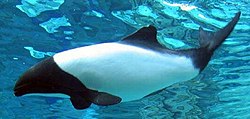

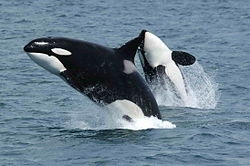






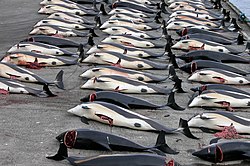

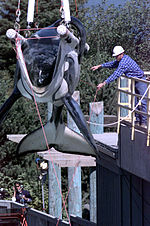































No comments:
Post a Comment